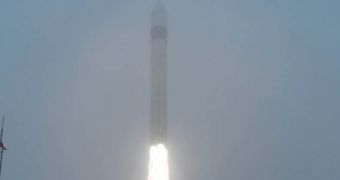Officials with the European Space Agency (ESA) announce that all three spacecraft in the recently-launched Swarm constellation have successfully passed the critical commissioning phase of their mission to study Earth's magnetic field from low orbit.
The spacecraft were launched aboard a Rockot delivery system from the Plesetsk Cosmodrome, in Russia, on November 22, and were released in a transfer orbit about an hour and a half later. They have been undergoing check ever since, under the supervision of engineers from the European Space Operations Center (ESOC), in Germany.
As soon as the vehicles made their way into space, the launch and early orbit phase of the mission, known as LEOP, began. “This marked the start of LEOP, and the mission team was in the Main Control Room around the clock. Everything has gone very well, and I am very proud of the strong teamwork and dedication shown by everyone,” says spacecraft operations manager Juan Piñeiro.
Since November 22, ESOC mission controllers have conducted a variety of tests, checks and configurations on the three satellites. Power, altitude, thermal and orientation systems were put through their paces, and came through with flying colors. Swarm is now set to begin its science mission very soon.

 14 DAY TRIAL //
14 DAY TRIAL //